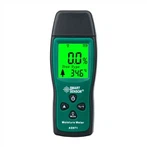Possible causes of poor solder joints:
(1) Forming tin balls, tin cannot spread throughout the entire solder pad?
The temperature of the soldering iron is too low, or the soldering iron head is too small; Solder pad oxidation.
(2) Form a tin tip when removing the soldering iron?
The soldering iron is not hot enough, and the soldering flux has not melted, which will take effect step by step. The temperature of the soldering iron head is too high, the flux evaporates, and the welding time is too long.
(3) Is the tin surface not smooth or wrinkled?
The soldering iron temperature is too high and the welding time is too long.
(4) Is the area of rosin dispersion large? Hold the soldering iron head smoothly.
(5) Tin bead? Add tin wire directly from the soldering head, add too much tin, oxidize the soldering head, and strike the soldering iron.
(6) PCB delamination? The temperature of the soldering iron is too high, and the soldering iron head hits the board.
(7) Black rosin? Temperature too high
Determination of non-standard tin points:
(1) False soldering: Seemingly soldered but not actually soldered, mainly due to dirty solder pads and pins, or insufficient soldering flux and heating time.
(2) Short circuit: A component with feet is short circuited by excess solder between the feet, while another phenomenon is caused by improper use of tweezers, bamboo sticks, etc. by inspection personnel, resulting in short circuit between the feet. This also includes residual tin slag causing short circuit between the feet
(3) Deviation: Due to inaccurate positioning of the device before soldering or errors caused during soldering, the pins are not within the specified solder pad area
(4) Low tin: Low tin refers to the tin point being too thin to fully cover the copper sheet of the part, which affects the connection and fixation effect.
(5) Multi tin: The part feet are completely covered with tin and form an outer arc, making the part
The appearance and solder pad position cannot be seen, and it is uncertain whether the parts and solder pads are well soldered
(6) Wrong parts: If the specifications or types of parts placed do not comply with the operation regulations or BOM or ECN, it is considered a wrong part.
(7) Missing parts: The position where parts should be placed, resulting in gaps due to abnormal reasons.
(8) Tin balls and slag: Excess solder balls and slag attached to the surface of the PCB board can cause small pin short circuits.
(9) Polarity reversal: If the polarity orientation accuracy is inconsistent with the processing requirements, it is considered a polarity error.






